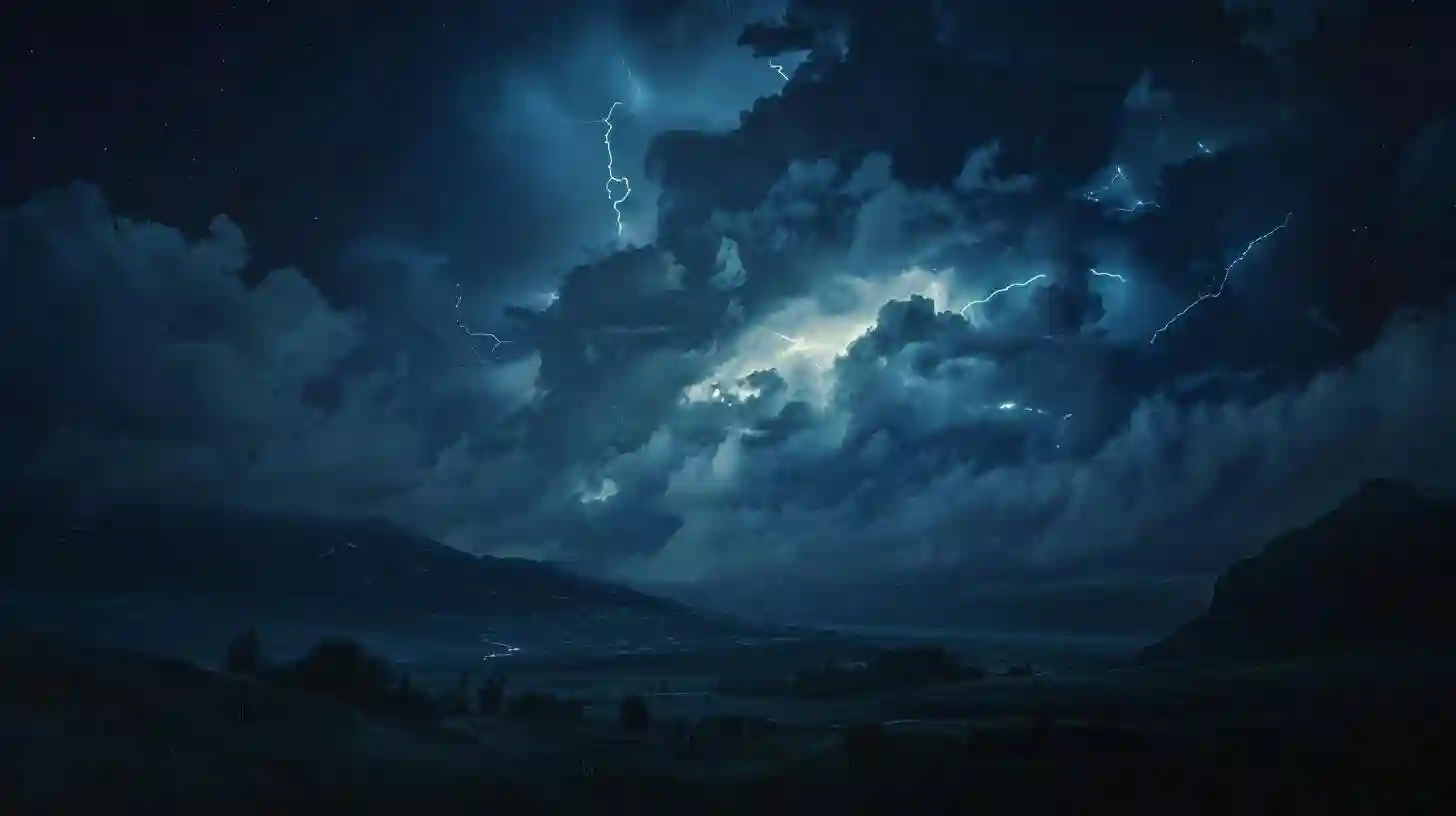
The weather is often unpredictable and can change in an instant. One of the most powerful and impressive natural phenomena that can occur during a thunderstorm is lightning. Lightning is a dazzling display of electrical energy that can strike with incredible force and intensity. This incredible force can damage property, cause fires, and even cause injury or death to living beings.
During a thunderstorm, lightning occurs as a result of the accumulation of electrical charge in the atmosphere. This charge buildup is caused by the collision of ice particles in thunderclouds. When the charge becomes too large, it is released in the form of lightning. This bolt can move at incredible speeds, reaching temperatures of up to 30,000 degrees Celsius - hotter than the surface of the Sun.
The sight of lightning streaking across the sky is both mesmerizing and frightening. It can illuminate the darkness of a stormy night with its brilliant flashes of light, casting harsh shadows and illuminating the landscape for miles around. But for all its beauty, lightning can also be incredibly dangerous. A single lightning bolt can contain more than one billion volts of electricity, enough to power a small town for weeks. When this force is released locally, it can cause destruction.
One of the most common dangers associated with lightning is the risk of fire. When lightning strikes a tree or building, the intense heat can cause the object to catch fire. This can lead to wildfires, house fires and other types of property damage. In fact, lightning is one of the leading causes of wildfires in the United States, destroying thousands of acres each year.
In addition to the risk of fire, lightning also poses a threat to human life. In the United States alone, lightning strikes kill an average of 49 people each year, according to the National Weather Service. These deaths can occur when people are stranded outside during a hurricane or when they seek shelter in unsafe places, such as under trees or in open fields.
Despite the dangers of lightning, there are ways to protect yourself and minimize the risks. One of the most important safety precautions is taking shelter during a thunderstorm. If you are outdoors as a thunderstorm approaches, find a sturdy building or car to take shelter from. Avoid open fields, tall trees and bodies of water as these are all prime targets for lightning strikes.
If you find yourself out in the open during a thunderstorm and cannot find shelter, crouch low to the ground and stay as low as possible. Do not lie on the ground as this may increase the risk of being struck by lightning. Stay away from metal objects such as fences or poles, as they can conduct electricity and increase the likelihood of getting hit.
Besides finding shelter, there are other ways to protect yourself from lightning strikes. Do not use electrical devices such as computers or phones during thunderstorms as they can attract lightning. Unplug electrical appliances and stay away from windows and doors, as these are vulnerable points in the building's structure.
Despite the risks associated with lightning, it is important to remember that this powerful force of nature is also a vital component of Earth's weather systems. Lightning helps balance the planet's electrical charge, releasing energy and reducing the risk of severe weather events such as tornadoes and hurricanes.
Lightning is a fascinating and impressive weather phenomenon that can both fascinate and frighten us. Its incredible power and intensity make it a force to be reckoned with, but with proper precautions and safety, we can learn to respect and appreciate the beauty of this natural wonder. The next time a storm approaches, remember to find shelter, stay safe, and marvel at the raw power of Mother Nature's lightning.